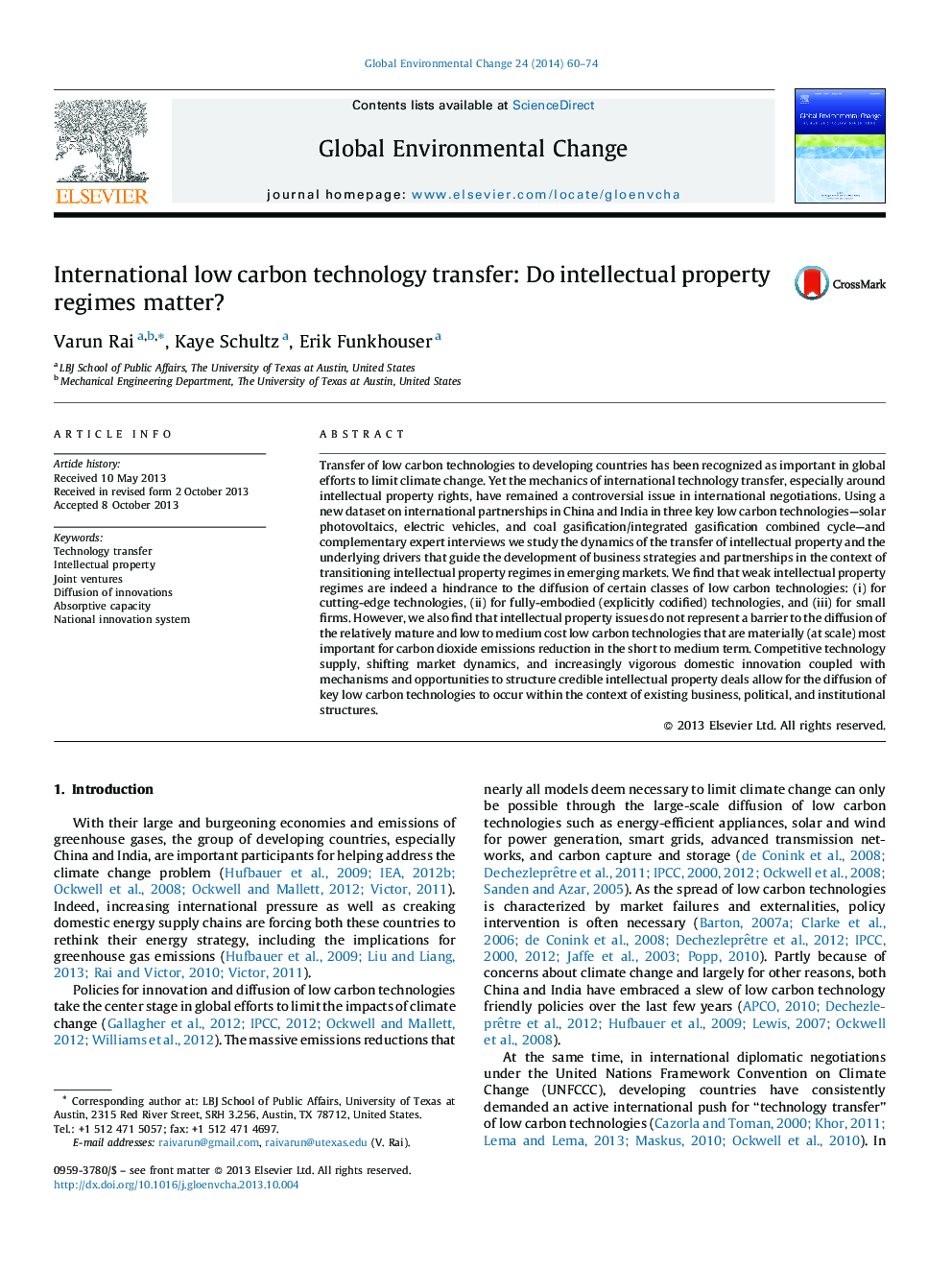| Article ID | Journal | Published Year | Pages | File Type |
|---|---|---|---|---|
| 7470621 | Global Environmental Change | 2014 | 15 Pages |
Abstract
Transfer of low carbon technologies to developing countries has been recognized as important in global efforts to limit climate change. Yet the mechanics of international technology transfer, especially around intellectual property rights, have remained a controversial issue in international negotiations. Using a new dataset on international partnerships in China and India in three key low carbon technologies-solar photovoltaics, electric vehicles, and coal gasification/integrated gasification combined cycle-and complementary expert interviews we study the dynamics of the transfer of intellectual property and the underlying drivers that guide the development of business strategies and partnerships in the context of transitioning intellectual property regimes in emerging markets. We find that weak intellectual property regimes are indeed a hindrance to the diffusion of certain classes of low carbon technologies: (i) for cutting-edge technologies, (ii) for fully-embodied (explicitly codified) technologies, and (iii) for small firms. However, we also find that intellectual property issues do not represent a barrier to the diffusion of the relatively mature and low to medium cost low carbon technologies that are materially (at scale) most important for carbon dioxide emissions reduction in the short to medium term. Competitive technology supply, shifting market dynamics, and increasingly vigorous domestic innovation coupled with mechanisms and opportunities to structure credible intellectual property deals allow for the diffusion of key low carbon technologies to occur within the context of existing business, political, and institutional structures.
Keywords
Related Topics
Life Sciences
Environmental Science
Environmental Science (General)
Authors
Varun Rai, Kaye Schultz, Erik Funkhouser,
